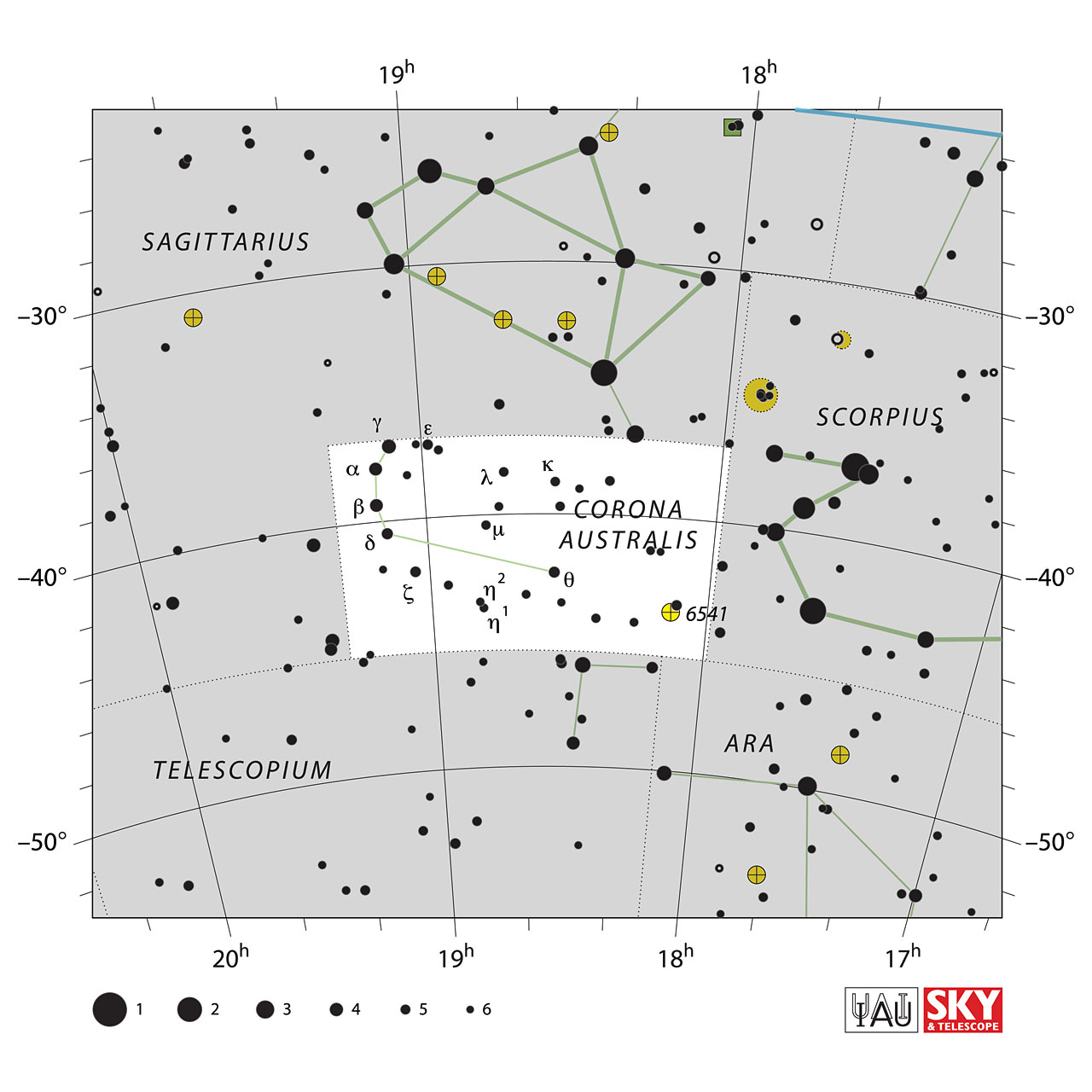Corona Australis


Coronae Australis is the southern counterpart to the northern crown, Corona Borealis, though it is considerably smaller and fainter. Its brightest star has a magnitude of 4.1. It is one of the 48 constellations listed by the 2nd-century astronomer Ptolemy. It is the ninth smallest modern constellation.
Although an ancient constellation, it is traditionally depicted as a wreath rather than a crown, lying at the feet of Sagittarius the archer. Like its northern counterpart, it is visible in the evening sky in the months around May and June.
The Ancient Greeks saw Corona Australis as a wreath rather than a crown and associated it with Sagittarius or Centaurus. Other cultures have likened the pattern to a turtle, ostrich nest, a tent, or even a hut belonging to a rock hyrax
It lies close to the plane of the Milky Way, but not in a part which is especially bright. Its only deep sky object of any significance is the globular cluster NGC 6541, designated C 78 in the Caldwell catalogue.
In the Indian system Corona Austarlis is called ದಕ್ಷಿಣ ಕಿರೀಟ (Dakshina Kirita)
Coronae Australis Contains
-
Stars
- α-CrA (mag 4.1)
- β-CrA (mag 4.1)
- γ-CrA (mag 4.4)
- δ-CrA (mag 4.6)
- θ-CrA (mag 4.6)
- ζ-CrA (mag 4.7)
- ε-CrA (mag 4.9)
- γ-CrA (mag 5.0)
- HD 168592 (mag 5.1)
- λ-CrA (mag 5.1)
- HD 170642 (mag 5.2)
- HD 168905 (mag 5.2)
- μ-CrA (mag 5.2)
- V686 CrA (mag 5.3)
- HD 175219 (mag 5.4)
- HD 172991 (mag 5.4)
- HD 171967 (mag 5.4)
- V692 CrA (mag 5.5)
- HD 167096 (mag 5.5)
- η¹-CrA (mag 5.5)
- η²-CrA (mag 5.6)
- κ²-CrA (mag 5.6)
- HD 169853 (mag 5.6)
- HD 165189 (mag 5.6)
- HD (mag 5.7)
-
Open ClustersNone
-
Globular Clusters
- NGC 6541 (mag 6.6)
-
Galaxy
- IC 4808 (mag 13.2)
- NGC 6768 (mag 13.5)
View Corona Australis in 3D 
Source: Wikipedia, in-the-sky.org
Image Courtesy: Sky&Telescope & IAU, Illustration Images linked from Urania's Mirror on Wikmedia Commons by Sidney Hall
Image Courtesy: Sky&Telescope & IAU, Illustration Images linked from Urania's Mirror on Wikmedia Commons by Sidney Hall
